Engineers Pick the Ten Best STEM Toys to Give as Gifts This Year
These expert-approved gifts teach robotics, coding and engineering thinking through stories and play
:focal(3976x2651:3977x2652)/https://tf-cmsv2-smithsonianmag-media.s3.amazonaws.com/filer_public/4a/eb/4aebd392-2b94-4566-a9af-96d13dd65f75/2021_top10_stemgifts_a.jpg)
Every holiday season, STEM-themed presents fly off the shelves as people purchase educational toys and books to give to kids in their lives. But standing in the toy aisle—or scrolling on Amazon—staring at colorful rows of building blocks, robots and computer games can be overwhelming.
To help people find the best and most thoughtfully designed engineering gifts, students and faculty at Purdue University's INSPIRE Research Institute for Pre-College Engineering put dozens of toys, gifts and games released within the last couple of years through the wringer. Before 2020, parents and kids were invited to test out the gifts, but due to the pandemic, the review process has been kept within INSPIRE. Each gift was played with and reviewed by three different people and assigned a ranking; the top scoring gifts earned a spot on the annual Engineering Gift Guide, which is now in its eighth year.
A report published by the American Academy of Pediatrics in 2018 says that learning and play are "inextricably linked," partly because children feel comfortable exploring on their own and are able to learn without pressure. Though not every toy needs to be—or should be—STEM-themed, some gifts are designed to teach specific skills and ways of thinking.
"For years, the INSPIRE faculty continued to get emails from people who would say, 'I really want to buy some kind of engineering toy for my child, what's your favorite toy?'" says Tamara Moore, the executive director of INSPIRE and a professor of engineering education at Purdue. "When we decided to start the guide, it was a really cool way to test toys and put out some kind of outreach to the community that would actually answer this question that we were getting all the time."
Though many gifts market themselves as engineering-themed, not all of them are created equal, Moore says. The best gifts engage children in engineering thinking and design by incorporating hallmark skills, such as spatial reasoning, coding, problem solving and design thinking, in an accessible way. Plus, well-designed toys also teach attributes such as creativity, optimism and learning from failure, which stretch well-beyond the field of engineering. In the guide, each gift comes with a description and an outline of the specific skills it fosters.
This year, Moore and her team of students reviewed nearly 80 gifts; 46 ended up on the gift guide. Specially for Smithsonian readers, they selected their ten favorite engineering gifts of 2021, which span three different age groups.
0-4 Years
Future Engineer, by Lori Alexander
This colorful board book stars Baby, a toddler who is discovering the skills it takes to be an engineer. With simple sentences and colorful graphics, author Lori Alexander explains the basics of engineering by directly comparing what an engineer does to something similar a toddler would experience. For example, if an engineer builds a tower, Baby can stack up blocks.
"It goes through the entire engineering design process from figuring out how things work to searching for an answer to actually building a solution, and then 'Oh no, the solution doesn't work!'" says Andrew Lake, an undergraduate studying electrical engineering who was a project coordinator for the gift guide." (Cartwheel Books, $8.99)
Future Engineer (Future Baby)
Flip a switch. Turn a gear. Could Baby be an engineer? Find out in this STEM-themed addition to the Future Baby series!
Four by Four Wooden Building Blocks
This set comes with 16 wooden building blocks in a variety of colors and shapes, plus ten accompanying template cards. Each card shows the blocks stacked up in a specific way with a 3-D view on one side and 2-D on the other. The cards start simple and increase in difficulty, but children also have room to freely play on their own. Though it sounds simple, toys like this foster spatial reasoning, design and critical thinking skills, among others.
"Going from a two-dimensional picture to a 3-D structure is called representational fluency," Moore says. "This is one of those toys that builds that kind of a skill. It's a skill that kids really gain very early in life." Toys like building blocks, shape sorters and Legos help develop these reasoning skills, she says. (HABA, $19.99)
Four by Four Wooden Building Blocks
This 16-piece building block set includes four each of four different sized and colored blocks allowing for plenty of block building options.
1-2-3 Build It! Robot Factory
With this toy, children build their own robot using 18 different plastic pieces—like squiggly legs, silly eyes and even a propellor hat—that can be configured in endless ways. The option to mix-and-match to create a one-of-a-kind robot or follow a booklet containing photos of different models encourages creative thinking, spatial reasoning skills and independent design, all hallmarks of a good engineer. (Learning Resources, $24.99)
Learning Resources 1-2-3 Build It! Robot Factory, Fine Motor Toy, Robot Building Set for Unisex Children Ages 2+
Craft your own imaginative robot creations with this build-it-yourself toy!
5-7 Years
Abby Invents the Foldibot, by Arlyne Simon
Abby's mom is sick of folding laundry, and Abby wants to help. She thinks that if there are washing machines and drying machines, then surely there must be folding machines somewhere, right? When she can't find one, she partners up with her cousin Miko to build the Foldibot. Author and biomedical engineer Arlyne Simon takes readers through the whole engineering process in Abby Invents the Foldibot, from talking to stakeholders (the friendly neighbors) about what features they'd like in the appliance to brainstorming and finally building (and rebuilding) the machine. On top of highlighting engineering principles like problem solving and design thinking, Abby, Miko and the diverse cast of characters show the value of teamwork and learning from failure.
"This is probably the only book that I've seen in my time here that actually covers the full engineering spectrum," says review team leader Elizabeth Schaaf, an undergraduate studying multidisciplinary engineering. "The book breaks [engineering principles] down to such a kid level by taking these things that I didn't really learn until college and putting them in a children's book." (Bella Agnes Books, $18.95)
Abby Invents The Foldibot
Abby Invents is a necessity in every home, classroom and library! A celebration of STEM and the engineering design process.
Mochi Robotics Kit
Mochi the teddy bear has a plan to jump from planet to planet on his space rover. He just needs some budding engineers to guide him through the universe using an interactive programming set. The kit comes with a stuffed Mochi, the supplies to build a wooden motor rover for him, a large floor mat with drawings of the planets, a programming board, a story book and various coding blocks. With an inviting set of instructions in the form of a story, kids learn how to place the coding blocks onto the programming board—basically a screenless computer—to code the commands that Mochi will follow. Using the board, kids can tell Mochi to move in a certain direction as he hops around the galaxy.
"When I got to Purdue, I had never done coding in my life," says Sydney Cooper, an undergraduate studying biological engineering. "[Mochi] explains it in a very digestible format so that kids are able to understand how coding works. I wish I had this at a younger age to really learn it." (My Creativity Box, $219.00)
Mochi Robot
Mochi engages your child in computing and problem-solving through hands-on code, interactive storytelling, and DIY assembly. Children learn at their own pace and challenge themselves by designing their characters, experimenting with coding commands, and exploring new subjects.
STEM Apple Factory
The STEM Apple Factory is a colorful, highly interactive set that comes with six instruction cards and 12 apples, which come in three colors and a specific number of seeds inside. The cards provide a simple set of instructions to move the apples through six stations, from washing to sorting to packing them in boxes. The open-ended design allows for kids to use objects they find around the house to represent each station, encouraging creative thinking and iterative design. For example, Moore says she would use rolling pins to move apples along for the conveyer belt station. Kids follow each station until they have a fully running apple factory. By playing over again, kids discover new and creative ways to accomplish the challenge. (Skoolzy, $39.99)
STEM Apple Factory
Pick early learning fun with this colorful and versatile bushel of apples. Using the right educational toys children gain basic life skills and build smart minds!
Ages 8+
Coding Charms
Coding Charms is the perfect way to teach coding to crafty kids. It combines coding with classic and beloved fuse beads—placed on a pegboard and melted together—to make keychains. Each kit includes 2,000 fuse beads, a square pegboard, a 44-page activity book and a few more tools. For each charm outlined in the activity book, there is a page of code for kids to follow, telling them to skip a space, move to the right, place a specific bead or move down to the next line, among other commands. If they follow the instructions correctly, they'll end up with a trinket, like a narwhal or a fox. It's a screen-free way to introduce coding and teach concepts like functions (a set of instructions) and debugging (finding and removing errors in a code). Kids are also encouraged to write their own code and come up with a one-of-a-kind keychain to clip onto their backpacks. (hand2mind, $21.99)
Coding Charms
Learn about coding without the use of a computer! While making our coding charms, your young one will learn about algorithms, encryption, puzzling, sequencing, variables, puzzle, binary, and much more!
Snap Circuits Light
Snap circuits are a classic engineering gift because they show how electricity works, but all the lights, sounds and gadgets in this particular kit caught the reviewers' attention. This 55-piece set contains a circuit board, an instruction manual with 101 projects, and a variety of gizmos. Kids can start off easy by using switches and batteries to light up different parts of the board, then the models become increasingly more complex. They can wire the board to sound an alarm, play music from a speaker, launch a helicopter-like fan or put on their own light show. Plus, kids don't even have to use the instructions; once they have a grasp on how the circuit board works, the possibilities are limitless.
"It uses standard components, so the resistor component is the same sort of resistor I would use in the lab. They're just easier to handle for kids [and] those effects make it so dynamic and interesting," says Lake. (Elenco, $98.00)
Snap Circuits Light
Give your child an exciting, hands-on introduction to electronics with Elenco Electronics Snap Circuits Light.
Pi Marble Run Starter Set
Marble runs are another tried-and-true gift; kids love them because they can build a different architectural wonder each time they play. This 214-piece set comes with towers, tracks and two baseboards; the pieces are Lego compatible, so kids can jazz up their structure with new features and colors. An instruction manual explains how to construct one marble run complete with winding tracks, tall towers and tunnels; to play more, kids have to create their own, which develops creative thinking, spatial reasoning and iterative design skills. Most marble run sets are geared towards younger kids (4 to 7 years old) with larger, easier to handle pieces, but the complexity of this set offers a challenge for older age groups. (Hubelino, $199.99)
/https://tf-cmsv2-smithsonianmag-media.s3.amazonaws.com/filer_public/63/3c/633cc460-a53c-4434-a223-c97cbc93b453/hubelino_pi_marble_run_set.jpg)
Best Overall STEM Toy
Sphero Indi At-Home Learning Kit
Indi is designed to teach children the very basics of programming using a car-like robot that senses color. Kids can program Indi to drive around on any combination of 30 colorful silicone mats. For example, Indi will speed up if it drives over a green mat, stop at a red, and spin around on purple. The kit comes with challenge cards with illustrations to follow, or kids can free play and set up their own course.
The INSPIRE team loves Indi because it's a screen-free coding kit that teaches programming in a simple, fun and hands-on way. Specifically, Indi teaches block coding—instead of writing code, block coding follows a "drag and drop" type model to move instruction blocks around. And when kids are ready to switch things up, they can download the free Sphero Edu Jr app with the help of an adult, which allows them to change the actions assigned to each color tile. Beyond teaching the basics of coding, Indi fosters logical thinking, spatial reasoning and iterative design skills.
"Indi by Sphero has a lot to love about it," Moore says. "It promotes logic and computational thinking without requiring formal code, [and it] has the ability to grow with the child as it can be coded with block coding from an app. It also has many additional free resources that parents and educators have access to from its website to create new and more challenging things for kids to do with Indi.” (Sphero, $99.00)
Sphero Indi At-Home Learning Kit
Kids will discover how to communicate instructions to indi with color cards, solve puzzles, and direct indi through mazes they dream up.
A Note to our Readers
Smithsonian magazine participates in affiliate link advertising programs. If you purchase an item through these links, we receive a commission.
/https://tf-cmsv2-smithsonianmag-media.s3.amazonaws.com/accounts/headshot/rasha.png)
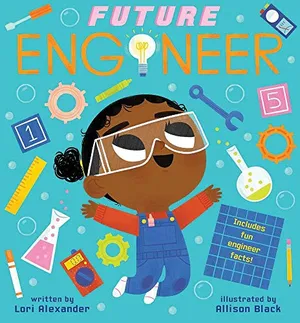
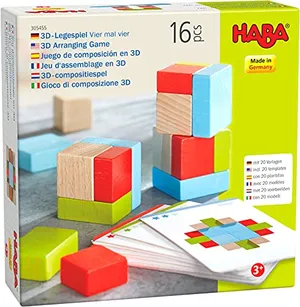
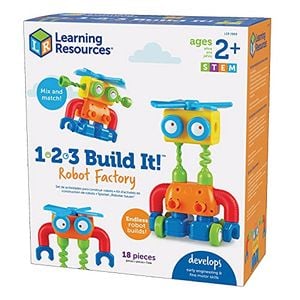
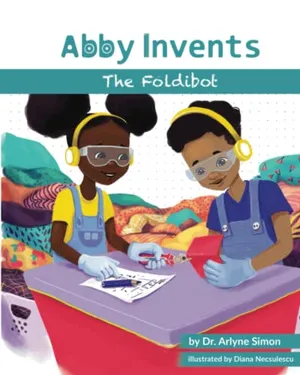
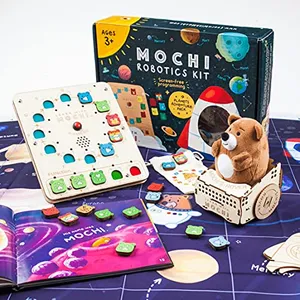
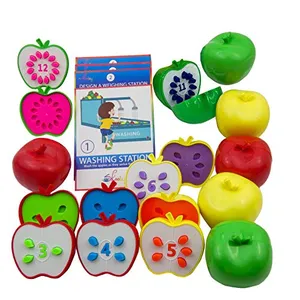
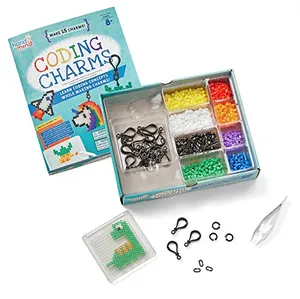
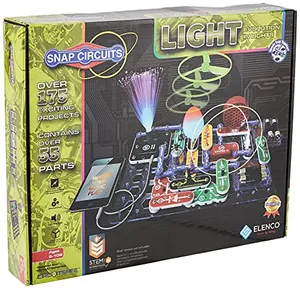
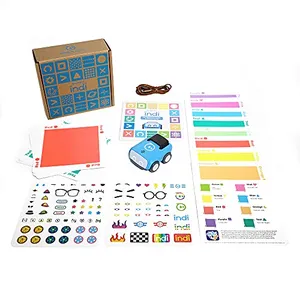
/https://tf-cmsv2-smithsonianmag-media.s3.amazonaws.com/accounts/headshot/rasha.png)